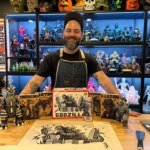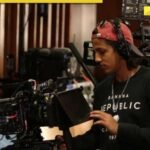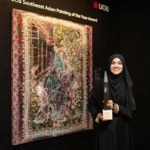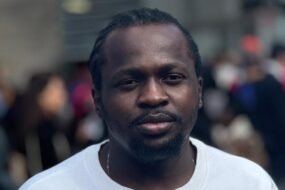
Before I’m greeted by multidisciplinary artist Truc Truong, I meet Lola and Theo – the resident pets at Kent Town’s fab workshop and studios.
Theo, Truong’s dog, is an old English sheepdog – the “Dulux dog” – crossed with a standard poodle. Lola is, simply, Lola.
“Unknown! She’s unknown! They [her owners] rescued her at five months,” Truong says of the smaller brown and white pooch.
“In the studio, we’re always like, ‘What’s Lola?’ But nobody knows.”
The small communal kitchen is bursting with artists, designers and metal fabricators who come in and out, making coffee, washing dishes or heating up food.
There is a profound feeling of community at fab (previously George Street Studios), with a shared momentum and a shared chaos. But there is also space for each of the 25 artists to co-exist and practise fully.
“It’s actually really nice,” says Truong, who works in portraiture, assemblage and installation.
“When you have some down time, it’s nice for other artists to kind of have their upbeat deadline. You can feel that energy. But it’s crazy when there are a few people with the same deadline,” she adds, laughing with her friend, the co-director of fab and Truong’s Catapult mentor Jennifer Mathews.
The pair, who sit on a couch across from me as Theo and Lola come and go between us as they please, met during a residency last year at Adelaide Contemporary Experimental (ACE).
“As soon as she moved in and she put all her stuff up, I was like, ‘This is ridiculous! Who this?’,” Truong recounts.
“I could really see the way Jen worked, and her style, and just the momentum she was picking up. And when someone does something you admire, you want to learn that skill.”

Truc Truong and mentor Jennifer Mathews with Theo in her fab workspace. Photo: Jack Fenby
When the opportunity arose to apply for the Catapult + Adelaide Fringe Mentorship, offered by Guildhouse in partnership with Fringe, the pair jumped right in. Truong was announced last week as the successful recipient of the mentorship, which funds an opportunity for a South Australian visual artist, craftsperson or designer to undertake a six-month residency with their chosen mentor, culminating in a public program, presentation of new work or performance as part of the 2025 Adelaide Fringe.
“I feel very lucky,” says Truong.
“I can’t wait to see what Truc does,” Mathews adds.
Mathews is a sculpture and installation artist. She recently presented an exhibition titled Unit at LAILA gallery in Sydney that featured largely steel works and some printed images.
Truong will be mentored by Mathews to develop welding skills and steel fabrication techniques as a next step in her practice.
“I think it will be really beneficial having our friendship as this foundation for the mentorship,” Mathews says. “Having this exchange of skills and knowledge and formalising it – it’s just such a fortunate opportunity to be able to do that.”
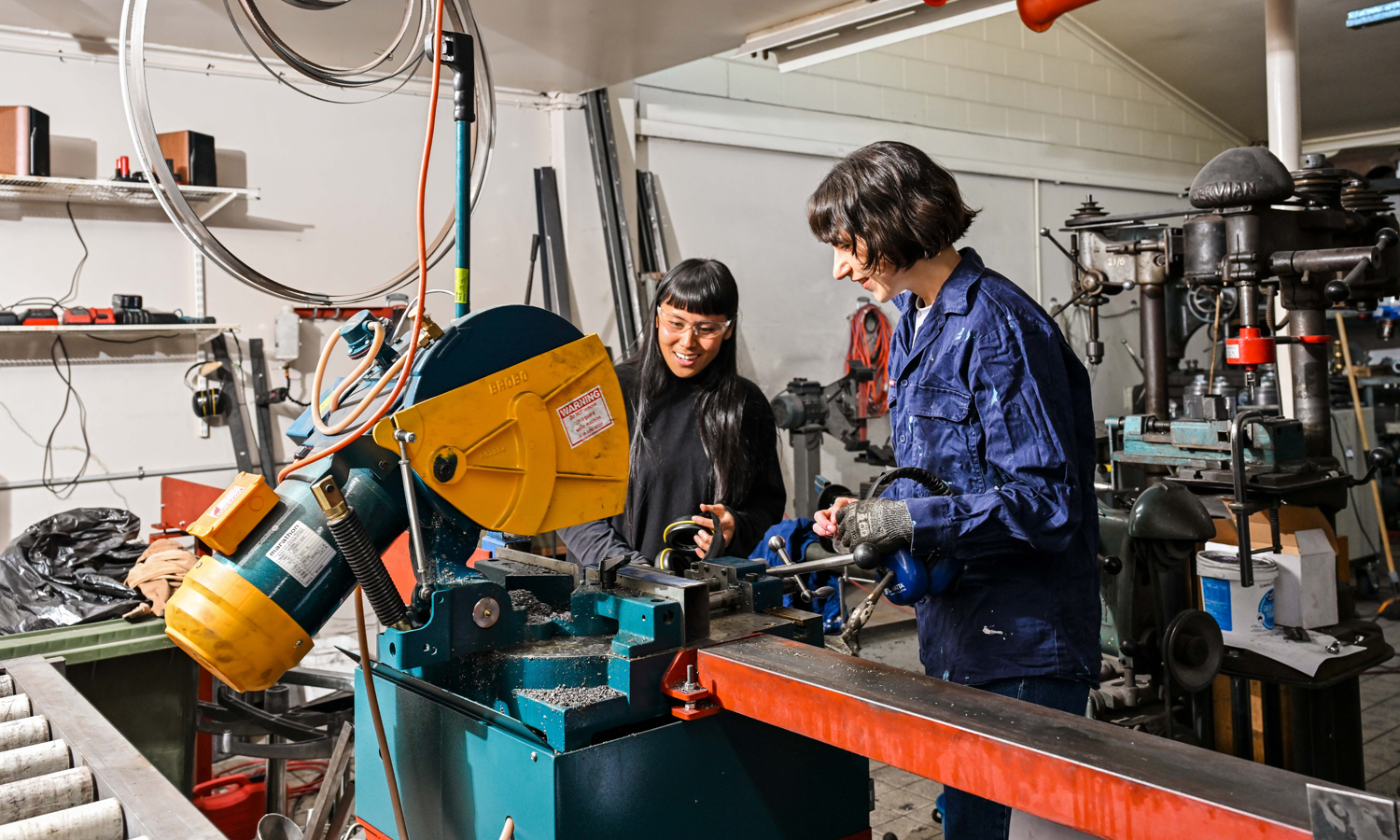
Truong is learning new skills from Mathews. Photo: Jack Fenby
Truong came to her practice unintentionally, but out of necessity, during a teaching degree at university.
“I did my first year, and within six months had a really bad mental breakdown,” she explains.
“I couldn’t get out of bed, was very suicidal, and the doctor told me, ‘You need to go to the gym’. I was like, ‘There’s no way I’m going to the gym’.”
Instead, she chose a ceramics class as part of her degree.
“When I was doing the topic, I realised I could think about life and forget about life at the same time,” she says. “Then, when I was talking to my doctor, he was like, ‘This is why I said the gym. It was just a place to assert your energy’.”
Art continues to be a place where Truong asserts her energy. Her area of the shared space at fab houses a collection of what appear to be random elements: AI-generated images on the walls, counterfeit luxury fashion labels, and pieces from her most recent exhibition at Gertrude gallery in Victoria earlier this year.
One piece is a church pew completely covered in stuffed toys.
“People can sit on this if they want,” Truong says, before turning to Lola and Theo and saying, “’You come sit on this, don’t you?’
“And these are just all op-shop toys or toys that people gave to me, or I found on Marketplace. I like using objects and things that have meaning to people.”
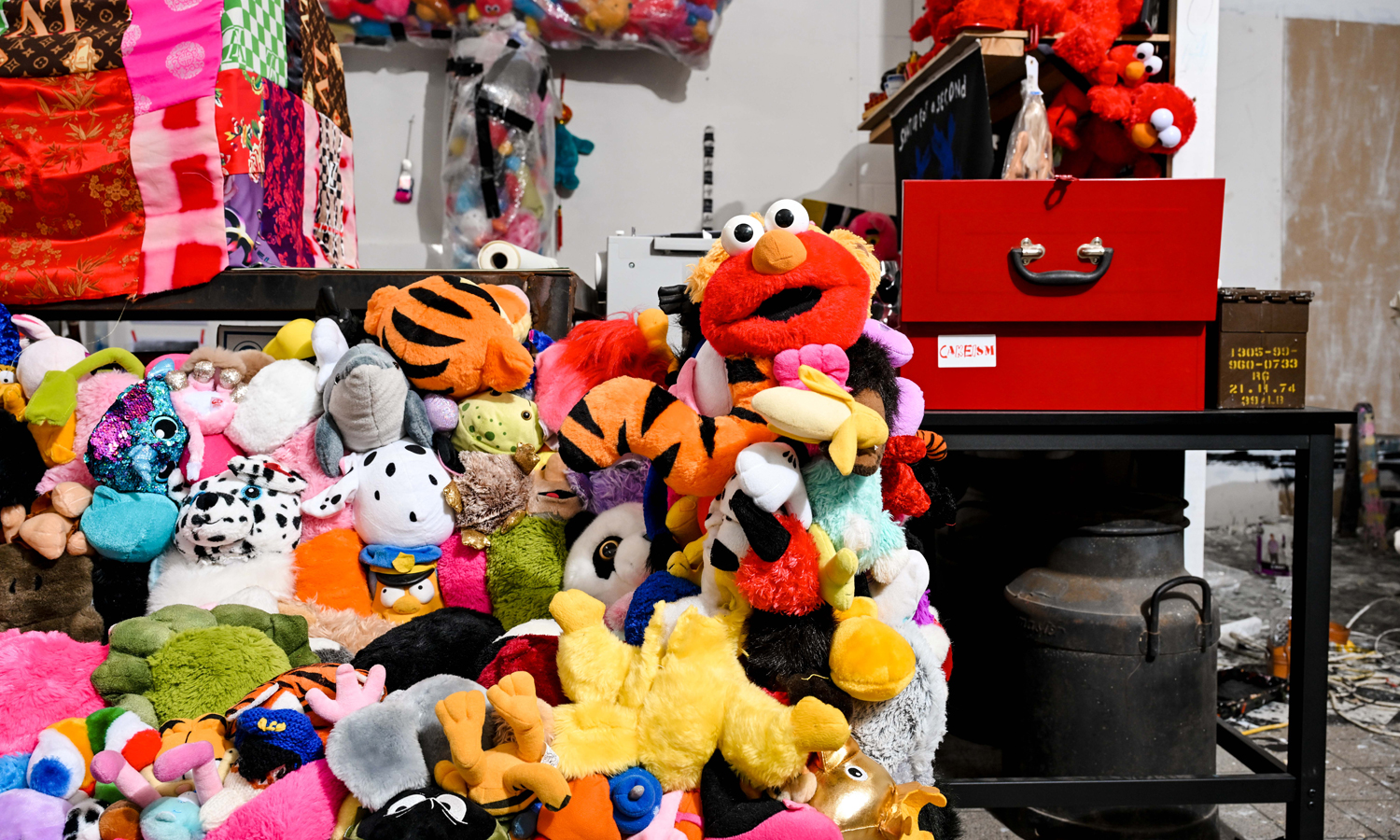
The church pew covered with toys – ‘people can sit on this if they want’. Photo: Jack Fenby
This work represents an intersection of ideas: the exploration of internalised racism; childlike play, freedom and exploration; and the power structures that are so often linked with spirituality. To represent all of this, Truong draws inspiration from Sesame Street – a program she says she became obsessed with – to tackle heavy, complex topics such as critical race theory or religion.
“Sesame Street was designed for kids that were under-resourced in Harlem, who were starting school and just didn’t have the educational resources,” she says. “I liked how Sesame Street was teaching three- or four-year-olds about prison, divorce, death and all these concepts.
“I’ve used all these, I guess, funny elements, and humour to make things more palatable,” she adds, referencing the stuffed toys.
Truong, a child of Vietnamese refugees, uses her practice to explore her racial, cultural and spiritual identity.
“When my parents came over by boat, there were heaps of missionaries in the Malaysian camp, and so they were converted and became Christian,” she says.
“My family wanted me to be so white. They wanted me white-named. They said I had to marry a white person. They wanted surgery to look white.
“I grew up thinking that we are inferior, and that whiteness is superior, so I never really got into any of my Vietnamese heritage, but as I grew up, I started having just really angry feelings.”
Connecting with her grandpa in Vietnam, who told her about resisting the French colonisation of the country and the whiteness that came with it, uncovered another version of the story for Truong. It helped paint a more nuanced and detailed picture about the history that brought her here.
Now, watching over her workspace is an altar for her grandfather, who passed away earlier this year.
“I like to light incense,” she explains. “I know it sounds funny. It’s like, do I believe that he’s really here? Sometimes I don’t, but sometimes I do.
“He just helps with hard times. I find art really fun and really hard.”
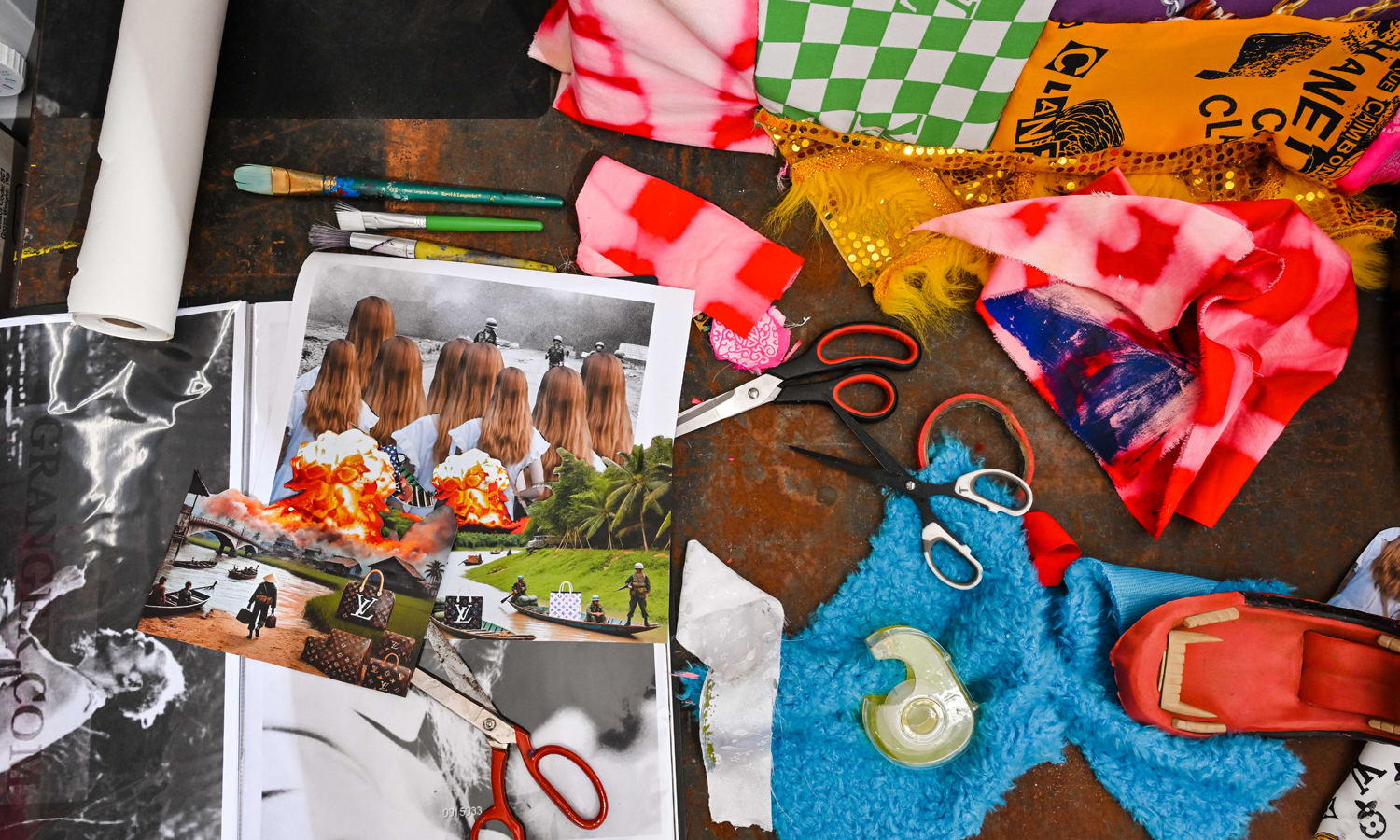
Some of the colourful materials in Truc Truong’s studio. Photo: Jack Fenby
As Truong talks about her late grandfather and feels the weight of the emotion that comes with it, Mathews offers a supportive smile and words of encouragement.
These touches, these relationships – with family, friends and mentors – is perhaps what makes fab studios the creative hub it is, and what will also help make the Catapult Mentorship a success.
“I’m just excited because this application worked… I didn’t want to do it with anyone else,” says Truong.
Mathews adds: “As part of fab, we really strive to get women, get nonbinary people, into the workshop and learn how to do metal work. I think it’s like 1 per cent, or less than 1 per cent, of the metal fabrication workforce is women.
“So, it’s a rare kind of space that feels safe and welcoming and like a comfortable space for artists to work in.”
As she says this, Theo and Lola gather at our feet. It is clearly not just a comfortable place for artists to work in, but for their beloved pets to share, too.

Get InReview in your inbox – free each Saturday. Local arts and culture – covered.
Thanks for signing up to the InReview newsletter.
If this article has raised issues for you, or if you’re concerned about someone you know, call Lifeline on 13 11 14.
In the Studio is a regular series presented by InReview in partnership with not-for-profit organisation Guildhouse (see previous stories here). More information about the Catapult mentorship program can be found here.
Support local arts journalism
Your support will help us continue the important work of InReview in publishing free professional journalism that celebrates, interrogates and amplifies arts and culture in South Australia.



